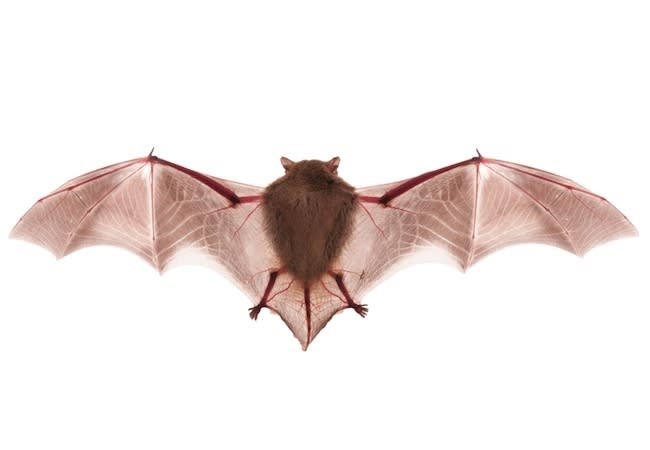How To: Get Rid of Bats

The good news: Bats are not aggressive. The bad news: If there are bats in your house, it's only a matter of time before their waste begins to pose a serious problem. Health concerns aside—and there are indeed viable health concerns—bat droppings and urine can actually destroy wood and other building materials, gradually compromising the structural integrity of your home. So even if you are not skittish and don't mind the idea of bats dwelling under your roof, there are very good, wholly rational reasons to act fast. Follow the steps outlined below to get rid of bats and prevent them from returning.
STEP 1
Familiarize yourself with local laws. In most states, bats are a protected species, which means that it's illegal to kill them. One humane approach is to install a bat house on your property prior to evicting your unwanted guests. Chances are that once barred entry to your home, the bats would take up residence in the new accommodations you've prepared for there. From there, you could count on the bats to continue their beneficial service of eating the insects on your property.
[inset]

STEP 2
When the goal is to get rid of bats, it's essential to figure out what type of bat you're dealing with. So the first thing to do is learn what types of bats are common in your neck of the woods. Next, try to get a good look at the bats, if you haven't already, so you can compare your observations to your research. Vampire aficionados could easily guess that you best chances of seeing a bat are at dusk and dawn.
Once you know what kind of bats are in your house, you can move on to determining whether or not it's maternity season for that particular species. If you prevent the mother bat from regaining entry to your house while the babies are still inside, those babies are going to die. And no matter how you feel about that, you're definitely not going to like how it smells. So if it's maternity season, wait it out.
STEP 3
Sure that maternity season is over or has not begun yet? OK—time to get serious. Watch your home closely at dusk or dawn, with the aim of pinpointing where exactly the bats are entering and exiting your home. Bear in mind that a bat colony usually has more than one access point, and these can be as small as a half-inch. You may need more than one evening to locate the different openings being used.
STEP 4
Cover each distinct opening with a one-way exit valve, one-way tube, or one-way bat netting product. Such items are commonly sold at home centers and pest control dealers. The ingeniousness of these designs is that, while they allow bats to exit the house with ease, they provide no way for the bats to return. If your chosen device seems to be working, leave it in place for a period of about three days.
STEP 5
Once there are no more bats left inside, you have a messy job on your hand. Inevitably, the bats will have left droppings and urine in their wake. When cleaning, it's imperative that you wear the proper protective gear—full-sleave clothing, work gloves, and a respirator. In fact, think seriously about hiring a professional cleanup crew. Once the area is no longer toxic, proceed to seal all the holes you identified.
Related Articles


